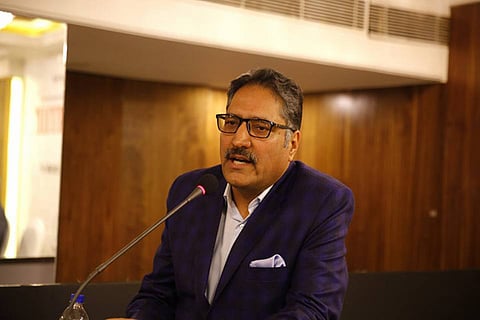Shujaat Bukhari and the journalist in Kashmir
On 14 June 2018, Kashmiri journalist and editor of Rising Kashmir Shujaat Bukhari was mowed down in a hail of bullets in Srinagar's Press Enclave area. The execution-style killing of Bukhari in broad daylight, from which the killers seem to have escaped easily, has left a void in Kashmiri journalism and a lot of questions unanswered. It is difficult to know who was responsible, but clearer to assess who is taking advantage of the situation. The aftermath has left journalists fearful yet determined, but Kashmiris fear the grim event presages a period of increased violence and repression. Himal Southasian interviewed senior journalist and executive editor of Kashmir Times Anuradha Bhasin Jamwal on her recollections of Bukhari and her assessment of the situation.
Himal Southasian: Shujaat Bukhari was a fellow journalist of many years – what is your personal recollection of him as a colleague and a professional, his contribution to the profession and the larger causes he was espousing?
Anuradha Bhasin Jamwal: My professional association with Shujaat Bukhari goes back to early 1992 or 1993, when he was working with Kashmir Times, where he started his career. He was hard working, and for a couple of years we worked together as a team. He parted ways with Kashmir Times in the beginning of the next decade when he got a job with the Hindu but the association remained, primarily because of my father Ved Bhasin [founding editor of Kashmir Times] who remained our common professional guru. Even when he turned into a professional rival, when he started his own newspaper Rising Kashmir in 2008, the space for mutual respect and association, at both the personal and professional levels, remained intact.
As a young professional he was hard working and showed steely determination to deal with extreme pressures but at that juncture wasn't too great at taking responsibilities. There were arguments and sometimes tiffs over trivial day to day issues in the newsroom. I usually operated from Jammu, (though some months from Srinagar), and Shujaat from the Srinagar bureau but the 300 kilometre distance often kept the daily tensions and connections alive.

